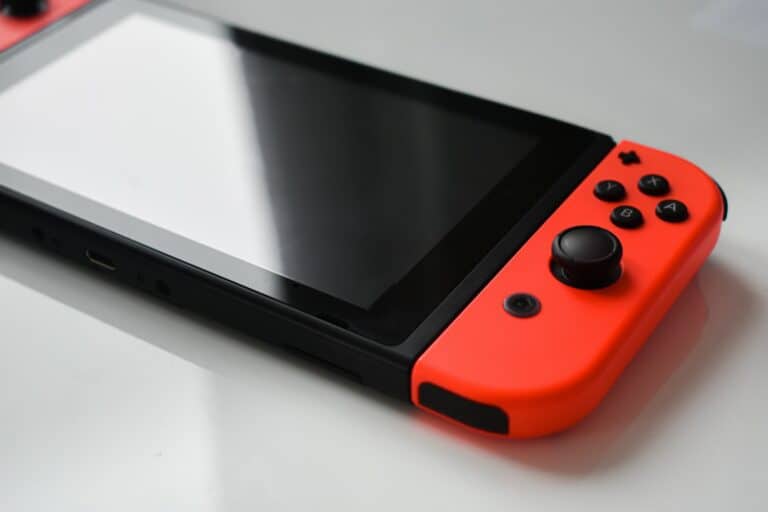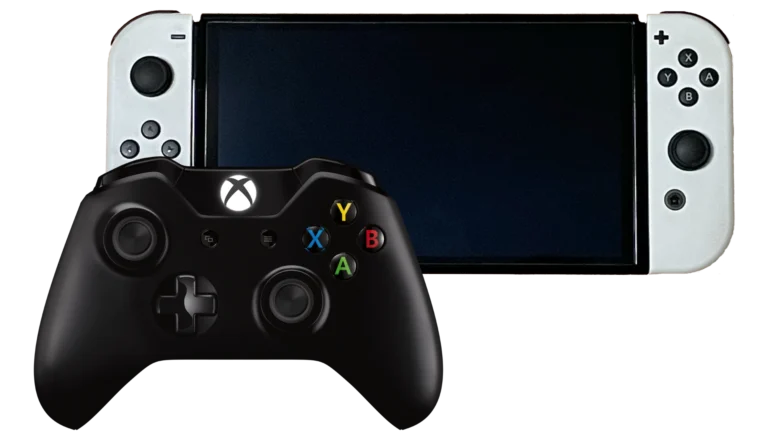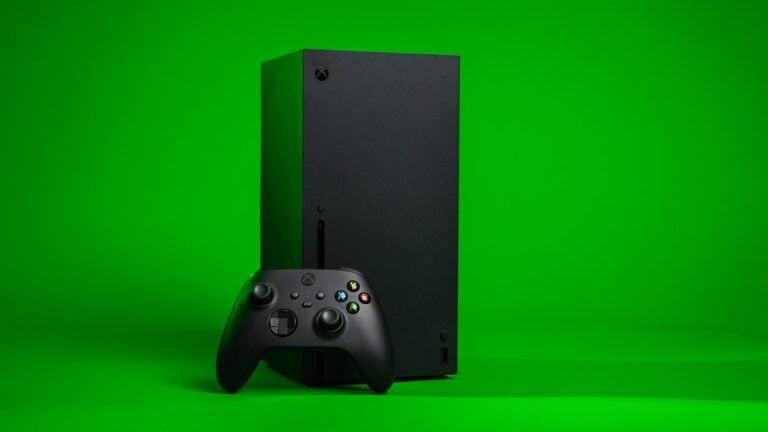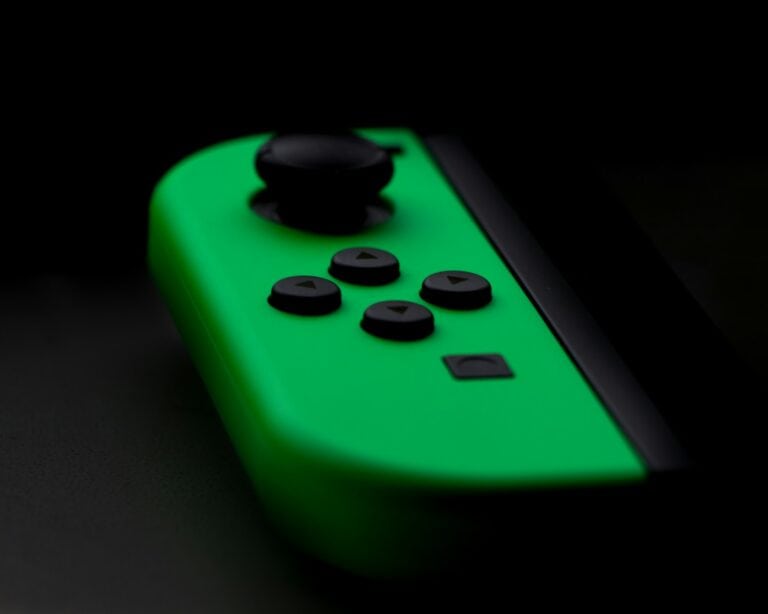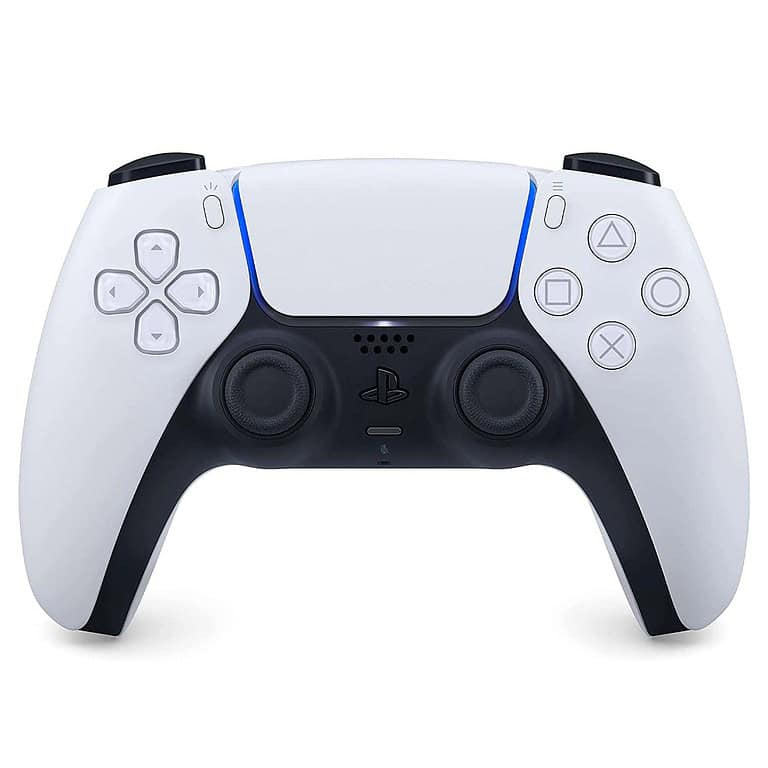
If you own a PlayStation 4, you might wonder how long you can expect it to keep running. The PS4 has been a popular gaming console since its release, and many gamers want to know about its expected lifespan before investing in a newer model. On average, a PS4 can last at least 5 years, but many consoles continue working properly for 10 years or more when properly maintained.
Your gaming habits and how you care for your console play a big role in its longevity. Some PS4 owners report their consoles still working perfectly after 7-8 years, while others may experience issues sooner. The PS4 Pro, with its improved hardware, might handle extended use better than the standard model, but both versions can provide years of gaming enjoyment with proper care.
If you notice your PS4 getting louder or running hot, it might be time for some basic maintenance. Regular cleaning and keeping your console in a well-ventilated area can help extend its life significantly. Taking these simple steps can mean the difference between replacing your console in 5 years versus enjoying it for a decade or more.
How Long Do PS4s Last? Lifespan & Maintenance Tips
1. Physical Lifespan of a PS4
The physical lifespan of a PlayStation 4 typically ranges from 5 to 8 years under normal usage conditions. Key factors influencing this include:
- Usage intensity: Heavy daily gaming can wear components faster.
- Environment: Dust, heat, and poor ventilation can shorten hardware life.
- Model differences: The original PS4 tends to run hotter than the Slim or Pro versions, which can affect longevity.
With proper care, many PS4 consoles continue functioning well beyond 8 years, but hardware failures like hard drive issues, overheating, or fan malfunctions may occur over time.
2. Software & Support Lifespan
Sony measures the PS4’s lifespan not just by hardware durability but also by software and service support:
- Since its launch in 2013, the PS4 has enjoyed over a decade of software updates, new game releases, and online service support.
- Sony is expected to continue official support for the PS4 through 2025, including system updates and online services.
- After 2025, Sony is anticipated to gradually phase out major support by 2026, with fewer new games released and eventual discontinuation of some online services.
- Despite this, many existing PS4 games and services will remain playable offline for years beyond official support.
3. How to Extend Your PS4’s Lifespan
To maximize your PS4’s lifespan, follow these maintenance tips:
a. Keep it Cool and Ventilated
- Place the PS4 in a well-ventilated area.
- Avoid enclosed spaces like cabinets without airflow.
- Regularly clean dust from vents and fans using compressed air.
b. Handle the Hard Drive Carefully
- Avoid sudden power-offs to prevent hard drive corruption.
- Consider upgrading to an SSD for faster load times and better reliability.
- Backup saved data regularly via cloud or USB.
c. Update Software Regularly
- Keep your system software up to date to benefit from performance improvements and security patches.
d. Avoid Overheating During Long Sessions
- Take breaks during extended gaming sessions to let the console cool down.
- Use external cooling stands if necessary.
e. Handle the Console Gently
- Avoid moving the PS4 while it’s powered on.
- Protect it from physical shocks or spills.
4. Summary: What to Expect for Your PS4
- Hardware: Expect 5-8 years of solid performance with good care.
- Support: Sony will maintain official support until around 2025-2026.
- Post-support: The PS4 will still be usable but with limited new updates and game releases.
If you want to keep gaming beyond the PS4’s prime, consider upgrading to a PS5, but your PS4 can still provide great gaming experiences for years with proper maintenance.
Key Takeaways
- A well-maintained PS4 can function properly for 5-10 years or even longer depending on usage and care.
- Regular cleaning and proper ventilation are essential for extending your console’s lifespan.
- The PS4 Pro and standard models both require maintenance, but may develop different issues as they age.
Overview of the PS4 Lifespan
The PlayStation 4 has proven to be a remarkably durable console for many gamers since its release in 2013. Understanding its expected lifespan can help you make informed decisions about maintenance and potential upgrades.
Factors Influencing Durability
Several key factors affect how long your PS4 will last. Regular cleaning is essential – dust buildup inside the console can lead to overheating and premature failure. You should clean vents monthly with compressed air and place your console in well-ventilated areas.
Usage patterns significantly impact longevity. Playing for extended periods puts more strain on internal components, especially the fan and power supply. The hard drive, with its moving parts, is often the first component to fail in heavily used systems.
Environmental conditions matter too. Keeping your PS4 in hot, humid environments accelerates wear. Maintaining room temperature between 65-75°F (18-24°C) is ideal for system health.
Power management also affects lifespan. Using rest mode instead of leaving the console fully powered can reduce stress on components.
Average Lifespan Expectancy
Most PS4 consoles can last between 5-7 years with regular use before you might notice performance issues. According to various reports, the average life expectancy for gaming consoles is around 5.5 years, though many users report their systems functioning well beyond this timeframe.
Sony officially supports each PlayStation generation for approximately 10 years as part of their product cycle. This support includes software updates, online services, and repair availability.
Hardware components have different failure rates:
- Hard Drive: 3-5 years
- Power Supply: 5-7 years
- Optical Drive: 5-8 years
- Cooling System: 4-6 years
With proper maintenance, your PS4 can last at least 5 years, though many consoles remain functional much longer. The original model tends to have more heating issues than the PS4 Slim or Pro versions.
Maintenance and Care
Taking proper care of your PS4 can significantly extend its lifespan beyond the average 5-7 years. Regular maintenance not only keeps your console running smoothly but also prevents common hardware failures.
Proper Handling and Storage
Place your PS4 on a flat, stable surface with at least 4 inches of clearance on all sides. This ensures proper ventilation and prevents overheating, which is a leading cause of hardware failure.
Never move your console while it’s powered on or when a disc is inside. This can damage both the disc and the internal components. When you need to transport your PS4, wait until it completely shuts down.
Store your console away from direct sunlight, heat sources, and high humidity areas. Extreme temperatures can damage internal components over time.
Consider investing in a surge protector for your PS4. Power surges can cause irreparable damage to the system’s motherboard and other sensitive electronics.
Cleaning and Dust Management
Clean your PS4 externally every 2-3 weeks using a microfiber cloth. Avoid using liquid cleaners as they might seep into the console and cause damage.
For dust removal, use compressed air to clean vents and ports. Hold the can upright and use short bursts to avoid moisture buildup inside the console.
Deep cleaning schedule:
- Light use: Every 12 months
- Moderate use: Every 6-8 months
- Heavy use: Every 3-4 months
Consider setting auto-shutdowns if you’re not around to prevent unnecessary wear on components.
Software Updates and Management
Keep your system software updated. Sony regularly releases updates that improve system stability and fix security vulnerabilities that could affect performance.
Avoid filling your hard drive to capacity. Leave at least 10-15% free space to allow the system to operate efficiently with temporary files and updates.
Using digital games instead of discs reduces wear on the optical drive, which is often one of the first components to fail.
Regularly check for and delete corrupted data files. These can slow down your system and cause crashes that may damage hardware over time.
Perform a database rebuild through Safe Mode every 6 months. This reorganizes your data and can fix many performance issues before they impact hardware.
Common Issues and Troubleshooting
PS4 consoles are durable, but several issues can affect their performance and lifespan. Being aware of these problems and their solutions can help you extend your console’s useful life.
Overheating Problems
Your PS4 may overheat if used for extended periods, which can seriously damage internal components. The most common signs include loud fan noise, sudden shutdowns, and the red light indicator.
To prevent overheating:
- Place your console in a well-ventilated area with at least 4 inches of clearance on all sides
- Clean dust regularly from vents using compressed air
- Replace thermal paste if you’re comfortable opening your console (typically needed every 3-4 years)
The PS4 Pro runs hotter than the standard model due to its more powerful components. If you hear what sounds like a jet engine, your cooling system is working overtime.
You can play for long periods without damage as the console has built-in protection to shut down before critical temperatures are reached.
Hard Drive Failures
Hard drive issues are among the most common problems affecting PS4 lifespan. Signs of failure include games freezing, corrupted data, slow loading times, and system crashes.
Your PS4’s stock hard drive typically lasts 4-6 years with regular use before showing signs of degradation. Fortunately, Sony designed the PS4 with replaceable storage.
Preventative measures:
- Avoid turning off the console during game saves or updates
- Regularly rebuild the database (in Safe Mode)
- Keep at least 10% of disk space free
If you need to replace your hard drive, both PS4 and PS4 Pro support standard 2.5″ SATA drives or SSDs. An SSD upgrade can significantly improve loading times and overall performance.
Controller Connectivity
DualShock 4 controllers often develop connectivity issues that can impact your gaming experience. Common problems include disconnections, input lag, and unresponsive buttons.
Troubleshooting steps:
- Reset the controller using the small hole on the back
- Pair it again by connecting via USB cable
- Update controller firmware through system settings
Battery degradation is normal – most controllers maintain good battery life for 2-3 years before significant reduction. When your controller only holds charge for 1-2 hours (down from 6-8 when new), consider replacing the battery.
Controller thumbsticks typically wear out before the PS4 console itself. You can extend their life by avoiding excessive pressure and cleaning them regularly with isopropyl alcohol to remove dirt and grime.
Upgrades and Enhancements
PS4 consoles can be improved to extend their lifespan and performance. With some technical knowledge and the right parts, you can maintain your console for years beyond its expected life cycle.
Replacement of Components
The PS4’s hard drive is the easiest component to upgrade. You can replace the standard 500GB or 1TB drive with a larger HDD or even an SSD for faster loading times. SSDs significantly reduce game loading times and improve overall system responsiveness.
The cooling system often needs attention as PS4s age. Replacing thermal paste between the CPU/GPU and heat sink can dramatically lower operating temperatures. This simple maintenance can prevent overheating issues that commonly cause system failures.
For the PS4 Pro, replacing the stock fan with a quieter model can reduce the notorious “jet engine” noise while maintaining proper cooling.
Power supply units can also be replaced if they fail, though this requires more technical skill and careful handling.
Enhancements for Extended Life
External storage expansion is a simple enhancement that extends your PS4’s utility. USB 3.0 external drives up to 8TB can be connected for additional game storage without opening the console.
Cleaning your PS4 regularly prevents dust buildup that leads to overheating. Use compressed air to clean vents every few months. This simple maintenance can help your console remain functional for 7-10 years.
Installing the latest system software is crucial. Sony continues to release updates that improve stability and security. These updates will likely continue until at least 2025 when Sony begins phasing out PS4 support.
Vertical stands with cooling fans provide better airflow and can extend your PS4’s lifespan by preventing overheating during long gaming sessions.
Impact of Gaming Habits
Your gaming behavior directly affects how long your PS4 will last. The relationship between usage patterns and console lifespan is significant, with certain habits potentially reducing your system’s longevity while others may help preserve it.
Frequency of Use
How often you play your PS4 has a major impact on its lifespan. Consoles that are used daily experience more wear and tear than those used occasionally. According to experts, a PS4 should last at least 5 years, but many users report their systems functioning well after a decade of use with proper care.
Heavy users who play daily place more strain on internal components. The cooling system works harder, and the hard drive experiences more read/write cycles, potentially leading to earlier failures.
If you use your PS4 less frequently, perhaps just on weekends or occasionally, you’re likely extending its useful life significantly. Some PS4 owners report consoles lasting up to 10 years with moderate use.
Gaming Intensity and Duration
Not all gaming sessions affect your PS4 equally. Playing graphically intensive games puts more stress on your console than running simpler titles. The PS4 Pro, with its enhanced hardware, can handle demanding games better but still experiences increased wear during intensive gaming.
Marathon gaming sessions that keep your console running for many hours at a time can be particularly taxing. Your PS4 consumes more energy during heavy gaming sessions, which generates additional heat and strain on components.
Consider these gaming intensity factors:
- High-demand games: Open-world and graphically rich titles push hardware harder
- Long sessions: Playing for 4+ hours without breaks increases internal temperatures
- Background processes: Downloading while gaming creates additional strain
Giving your console regular cooling breaks can help prolong its life, especially during intense gaming marathons.
End-of-Life Considerations
When your PS4 reaches its later years, you’ll need to think about upgrading options and responsible disposal methods. Making smart choices can save you money and help protect the environment.
Upgrading to New Consoles
As your PS4 or PS4 Pro ages, you’ll likely notice it struggling with newer games. Most PS4s last about 5-8 years before performance issues become noticeable. When deciding to upgrade, consider:
- Backward compatibility: The PS5 plays most PS4 games, protecting your game investment
- Trade-in options: Many retailers offer credit toward new consoles when you trade in your working PS4
- Price drops: Waiting 6-12 months after a new console release can save you money
Your PS4 Pro might extend your upgrade timeline since it handles more demanding games better than the standard model. Before purchasing a new system, check if a simple hard drive upgrade or cleaning might extend your current console’s life.
Recycling and Disposal
When your PS4 finally stops working or you’ve upgraded, proper disposal is important. Electronic waste contains materials harmful to the environment.
Responsible disposal options include:
- Electronics recycling centers that accept gaming consoles
- Sony’s take-back program in some regions
- Donation to repair shops for parts if the console is partially working
Before recycling, back up your game data and perform a factory reset to protect your personal information. Remove the hard drive if you’re concerned about data security.
Consider selling working components separately if you’re comfortable opening the console. PS4 controllers, power cables, and even the optical drive have value in the secondhand market.
PS4 Compared to Other Consoles
The PlayStation 4 stands out among gaming consoles for its balance of durability and performance. When measured against its competitors, PS4 systems demonstrate unique characteristics that affect their overall lifespan and user experience.
Durability Comparison
The standard PS4 and PS4 Pro models are built with longevity in mind. On average, a PS4 can last at least 5 years with proper care, which is close to the industry average of 5.5 years for gaming consoles. Many PS4s continue functioning well beyond this timeframe, with some original 2013 models still operating in 2025.
In terms of hardware reliability, PS4 systems have fewer reported overheating issues compared to the Xbox One’s early models. The internal cooling system of the PS4 Pro shows particular improvement over the original design.
Your PS4’s durability benefits from its user-serviceable hard drive, allowing for replacement when storage fails – an advantage over some competitors with more closed systems.
Performance Benchmarks
The PS4’s performance longevity compares favorably to other consoles of its generation. While the Nintendo Switch uses less power and generates less heat (potentially extending its physical lifespan), the PS4 Pro delivers more consistent high-performance gaming over time.
Game developers continue supporting the PS4 platform, with Sony expected to maintain support for another 2-3 years from now. This extended software support significantly impacts your console’s useful lifespan compared to competitors.
When comparing console generations, your PS4 has enjoyed one of the longer active lifecycles – approaching 12 years by 2025 since its initial 2013 release. This exceeds the typical 6-7 year generation cycle of previous console eras.
Performance degradation tends to be more software-related than hardware-based in PS4 systems, with newer games pushing aging hardware.
Accessory and Peripheral Compatibility
Understanding which PS4 accessories will continue to work with your console over time can help you make smarter purchasing decisions and extend the value of your gaming setup. Compatibility issues can affect both your gaming experience and your console’s performance.
Impact on Lifespan
Your PS4’s lifespan can be affected by the peripherals and accessories you connect to it. Using officially licensed accessories is generally safer for your console than third-party alternatives, which might cause power issues or connection problems over time.
Controllers are particularly important to consider. The original DualShock 4 controllers that come with your PS4 or PS4 Pro are designed to last several years, but heavy gaming can wear them out faster.
Specialty peripherals like racing wheels and arcade sticks can also impact system performance if they draw too much power or have compatibility issues.
For optimal performance and longevity, you should:
- Use Sony-certified charging cables for controllers
- Avoid overloading USB ports with multiple accessories
- Keep peripherals updated with the latest firmware
- Store accessories properly when not in use
Role of Gaming Environment
Where you keep your PS4 can greatly affect how long it lasts. A good gaming setup protects your console from common threats while creating an enjoyable play space.
Ventilation and Temperature
Your PS4 needs proper airflow to stay cool while running games. Hot environments can damage your console and shorten its lifespan. Make sure your PS4 has at least 4-6 inches of clear space on all sides, especially near the back and side vents.
Never place your console in enclosed spaces like cabinets without proper ventilation. This traps heat and forces the internal fan to work harder, potentially leading to overheating and automatic shutdowns.
Room temperature matters too. Keep your gaming area between 60-75°F (15-24°C) for optimal performance. Consider using a cooling stand for extra airflow during extended gaming sessions that last up to 8 hours.
Dust-Free and Organized Space
Dust is your PS4’s enemy. Regular cleaning of both your console and gaming area can prevent dust buildup that clogs internal components. Use compressed air to clean vents every 2-3 months.
Your gaming space organization affects console health too. Keep drinks and food away from your PS4 to prevent accidental spills. Liquid damage is often irreversible and not covered by warranty.
A clean, well-organized setup also improves your gaming comfort. Position your console on a solid, flat surface—not on carpet or soft materials that block bottom airflow.
Cable management helps too. Tangled wires restrict airflow and create dust traps. Use cable ties or clips to keep connections neat and accessible without crowding your console’s ventilation space.
Frequently Asked Questions
PlayStation 4 consoles have varying lifespans depending on usage patterns and maintenance. Many PS4 owners have questions about how long their systems will remain functional and supported.
What is the average lifespan of a PS4 console?
The typical PS4 can last around 5-10 years before experiencing significant issues. Most users report their consoles run into problems around the 6-8 year mark, though some units continue functioning beyond this timeframe.
The average life expectancy for gaming consoles is about 5.5 years, but many PS4s exceed this estimate with proper care. Some original PS4s from 2013 are still operating in 2025, showing they can last much longer than expected.
What are the common signs of a PS4 nearing the end of its usable life?
Excessive fan noise is often the first indicator your PS4 is struggling. The console may become noticeably louder during gameplay as the cooling system works harder to maintain safe temperatures.
Frequent crashes, freezing during gameplay, or unexplained shutdowns can signal hardware failure. You might also notice longer loading times, graphical glitches, or the system not recognizing game discs properly.
The controller’s battery life may severely decrease, and buttons might become less responsive as both the console and accessories age together.
How long will the PS4 continue to receive support and updates?
Sony typically supports their consoles for about 10 years after launch. With the PS4 releasing in 2013, you can expect some level of support until at least 2023-2024, though it may be gradually reduced.
Game developers are still creating titles for PS4, though this will decrease as PS5 adoption increases. Major game releases supporting PS4 will likely continue until around 2025-2026, focusing primarily on cross-generation titles.
System software updates will continue addressing security issues, even as feature updates become less frequent.
Is there a difference in longevity between the PS4 Slim and the original PS4 model?
The PS4 Slim generally runs cooler than the original model due to improved internal design and efficiency. Users report the Slim often runs better than even the PS4 Pro in terms of reliability and thermal management.
The Slim uses less power, which means less heat generation and potentially longer component life. Its smaller fan can sometimes be more prone to dust buildup, however, requiring more frequent cleaning.
Both models use similar core components, so the fundamental lifespan expectancy remains comparable with proper maintenance.
What measures can be taken to prevent a PS4 from overheating?
Keep your PS4 in a well-ventilated area with several inches of clearance on all sides. Never place items on top of the console or block the vents with dust covers while the system is running.
Clean your PS4’s vents and internal components regularly. Using compressed air every 3-6 months can remove dust buildup that restricts airflow and causes overheating issues.
Consider placing your console on a cooling stand with additional fans for improved air circulation. This is especially helpful if you live in a warm climate or play for extended sessions.
What impact did the release of the PS5 have on the PS4’s lifespan?
The PS5’s backward compatibility has extended the PS4’s useful life by allowing players to continue enjoying their PS4 library on new hardware. This reduces the pressure to replace aging PS4 consoles immediately.
Sony has committed to cross-generation game support longer than in previous console transitions. Many titles released since the PS5 launch still offer PS4 versions, though this practice will gradually phase out.
The availability of PS5 repairs and parts has made PS4 maintenance easier as repair services can dedicate more resources to the older console.

